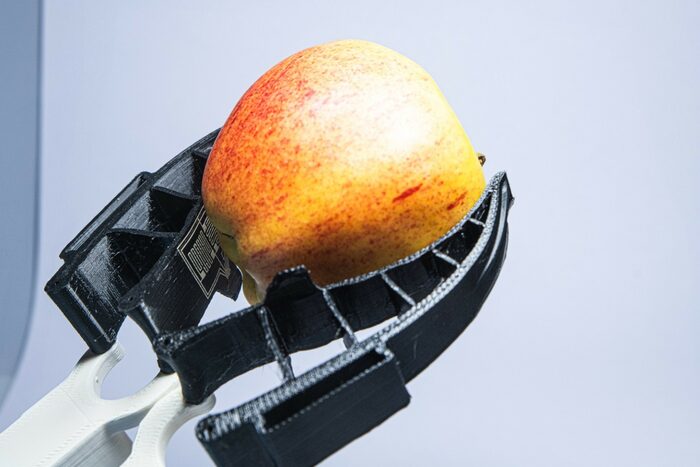|
Landeshauptstadt Dresden - www.dresden.de https://www.dresden.de/en/business/tomorrow-s-home/news/2024/023-fuehlende-roboter.php 22.11.2024 10:26:55 Uhr 22.04.2025 02:13:20 Uhr |
|
Robots learn to feel in Dresden
Dexterity required: researchers at the Fraunhofer Institute for Material and Beam Technology IWS Dresden are making robotic hands tactile. Together with partners from industry and research, they are developing grippers and other applications in various projects that are modeled on nature. Whether for harvesting, exploring submarines or the surface of Mars: Sentient robots can be helpful in many areas. Innovations in 3D printing are also driving advances in technology.
Robots and other machines should be able to grasp - but with feeling, please! The technical concept behind it: Sensors enable flexible grippers from the 3D printer to grip just firmly enough so that neither people nor objects are harmed. Several additive printing processes and various other technologies are used to achieve this. Interest is already growing in industry and research - after all, future applications are diverse: from harvesting robots that pick strawberries without crushing them, to autonomous rovers that safely retrieve unknown samples on Mars or in the deep sea, to collecting sea creatures such as sea urchins without harming them.
Nature serves as the inspiration for the development of such grippers. The approach behind this is called “bionics” - the technological imitation and further development of a biological principle. “Technological advances in additive manufacturing now make it possible to adapt many more biological concepts than before,” emphasizes mechatronics engineer Hannes Lauer from the Fraunhofer IWS, who is supervising the BioGrip project. “Nature is full of solutions. If we as engineers get stuck, it's always worth looking at their concepts.”
There are several examples of bionics in research practice in Dresden. In various projects, the Fraunhofer Institute for Material and Beam Technology IWS is working with industry and research to test prototypes for different applications. As part of BioGrip, for example, researchers are working on a technology that imitates the movement of fish fins in order to grip objects gently. Several 3D printing processes are used in combination, as well as special silver sensors that provide the necessary feeling in the finger and allow it to react to touch, pressure and curvature. In the future, the technology could simulate other functions of the human hand, such as estimating the weight of an object.
BioGrip is just one of several projects at the Fraunhofer IWS in which nature serves as a blueprint or source of inspiration. These include laser systems that engrave lotus effects and other natural tricks to repel dirt, ice or friction as fine patterns on surfaces. In the Nature4Nature project, the Dresden bionics experts are working with partners from industry and research to develop new types of filters that will prevent sewage treatment plants from flushing microplastics into natural water cycles and ultimately into the world's oceans. Here, the researchers have been guided by the ability of some rays and paddlefish as well as other suspension feeders in the oceans.







